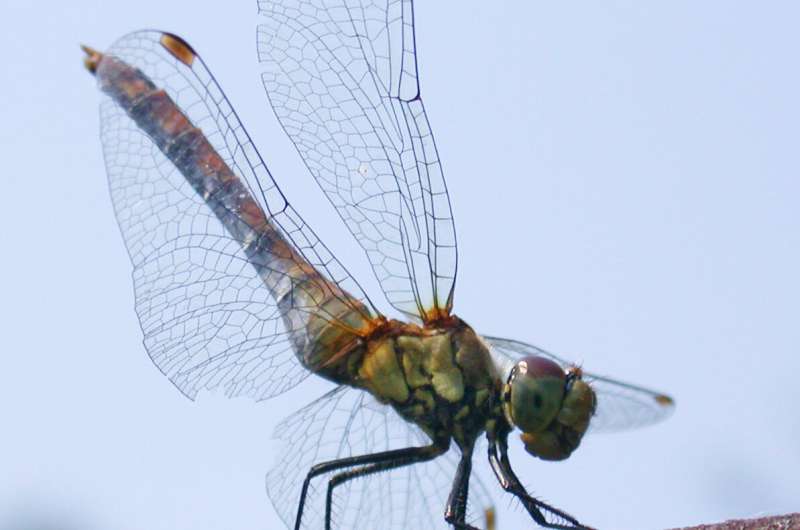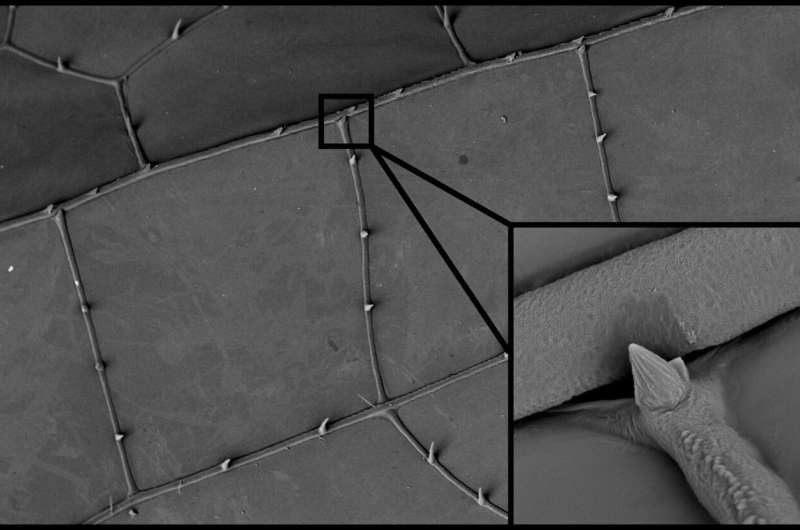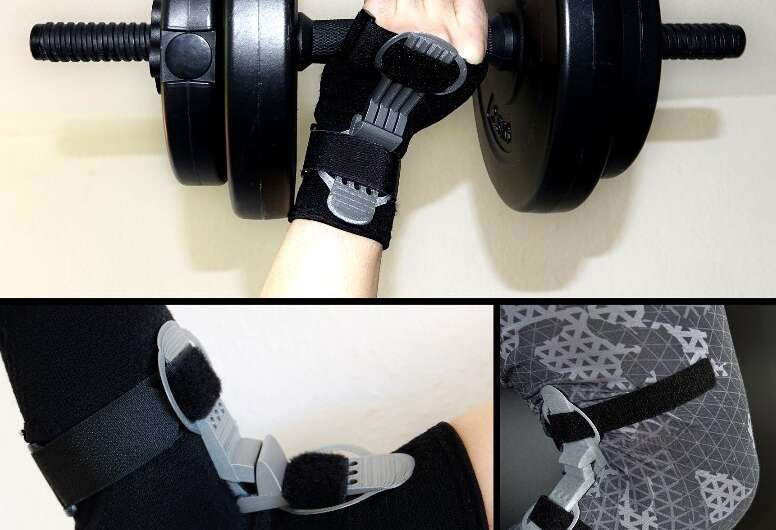Research team develops joint splints for sports and medicine inspired by dragonfly wings

Around 80% of sports injuries are so-called musculoskeletal injuries, for example sprains, strains or overstretching. Such injuries can occur especially in those sports with high loads on the wrists, such as handball, basketball or weightlifting. Conventional supports either do not provide enough stability or restrict the mobility of the joint too much. A research team from the Zoological Institute at Kiel University (CAU) has now developed a flexible joint splint that combines maximum mobility and optimal stability. The source of their inspiration was the ultra-thin wings of dragonflies, which have to withstand substantial external loads during flight. Their study was published yesterday in the journal Applied Physics A. Now the scientists want to bring their design into practice, a patent has already been filed.
Inspired by the unique properties of dragonflies' wings
Actually, the scientists are investigating the fascinating properties of dragonfly wings: To withstand different wind currents and collisions with solid objects, they have to be both stable and resilient. "In engineering, stability and mobility are often two mutually exclusive features, whereas in nature they are widely common," says Ali Khaheshi, the first author of the study. The engineer and materials scientist is about to complete his Ph.D. with Professor Stanislav Gorb and Dr. Hamed Rajabi research group "Functional Morphology and Biomechanics." Together they have investigated how the dragonfly manages to combine both characteristics.
"The results from biology show us exciting ideas for technical solutions: In the case of dragonflies, the key is the joint-like connections in their wings," explains Gorb. They are interwoven with patches of the elastic protein resilin, which initially allow great freedom of movement.However, if a certain angle of extension is exceeded, stiff cuticular spikes on the wing block a further movement by interlocking. They now support the joint and give wings the required stability to withstand high loads.
"When a team colleague told us about the pain in his wrist during sports, we recognized that our wing-inspired concept can provide a solution" reports Rajabi. In order to transfer the principle from nature to a supportive and yet mobile wrist splint, they developed a kind of hinge made of polylactic acid (PLA). Thanks to its special design, the construction made of the light and flexible plastic weighs just 23 grams. This means it can be strapped onto standard elastic textile wraps and does not restrict the natural movement of the hand. Only from an angle of 70 degrees—that is how far wrists are bent for weightlifting—a spike blocks the movement and stabilizes the joint under the external load, similar to the spikes in dragonfly wings.
Applications in medicine and robotics are also possible
In a special test setup, the research team examined how their joint splint withstood the bending and external force. "The tests showed that our splint has a load-bearing capacity of about 320 Newton that means around 32 kilograms which is more than 1300 times of the splint's own weight. If the structure is made of stronger materials than PLA, it could withstand loads up to 450 kg which would be much higher than the force experienced by the world record of weightlifting," says Khaheshi.

The joint splint can be produced easily and cost-effectively using 3-D printing and can be adjusted for hand, elbow or knee joints. This also allows medical applications after injuries, for example when joints should only bend and stretch to a limited extent. Another advantage of the design is that it is easy to control. "Unlike a nonlinear mechanical spring, which gradually becomes stiffer when compressed, we can switch between the mobile mode and the support mode without time delay," says Rajabi. This makes it also a suitable candidate for robotic applications.

Looking for industrial partners
Now the scientists are looking for industrial partners to develop their joint splint further and bring it to the market, for example as an integrated component of textile bandages. They already have a patent on their concept. "Biological systems are far more complex than one often thinks at first glance. As a result, they have unique properties from which we can learn completely new approaches for other fields," says Khaheshi, summarizing his interest in the research field of biomechanics.
More information: Ali Khaheshi et al. Spiky-joint: a bioinspired solution to combine mobility and support, Applied Physics A (2021). DOI: 10.1007/s00339-021-04310-5
Provided by Kiel University




















